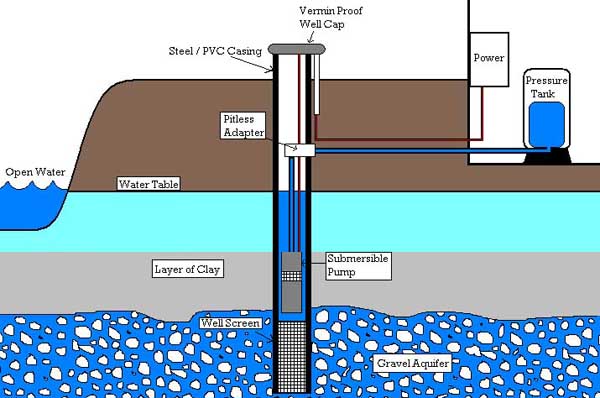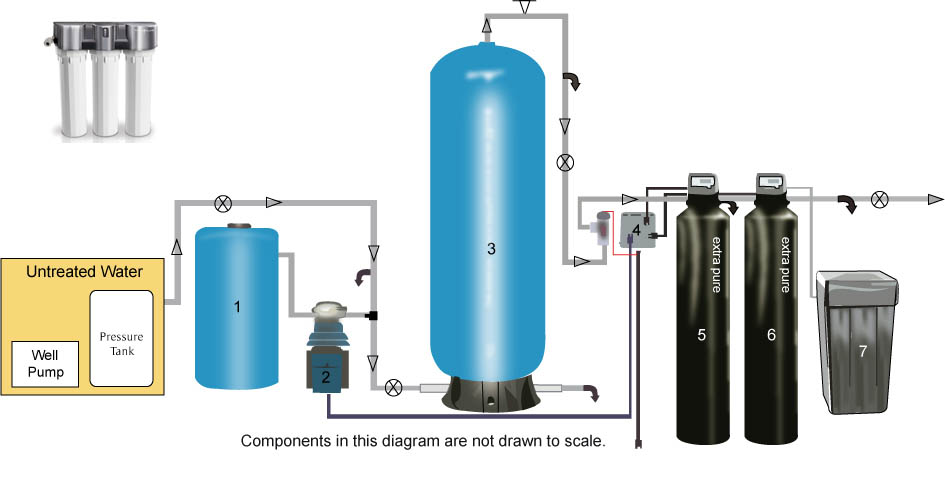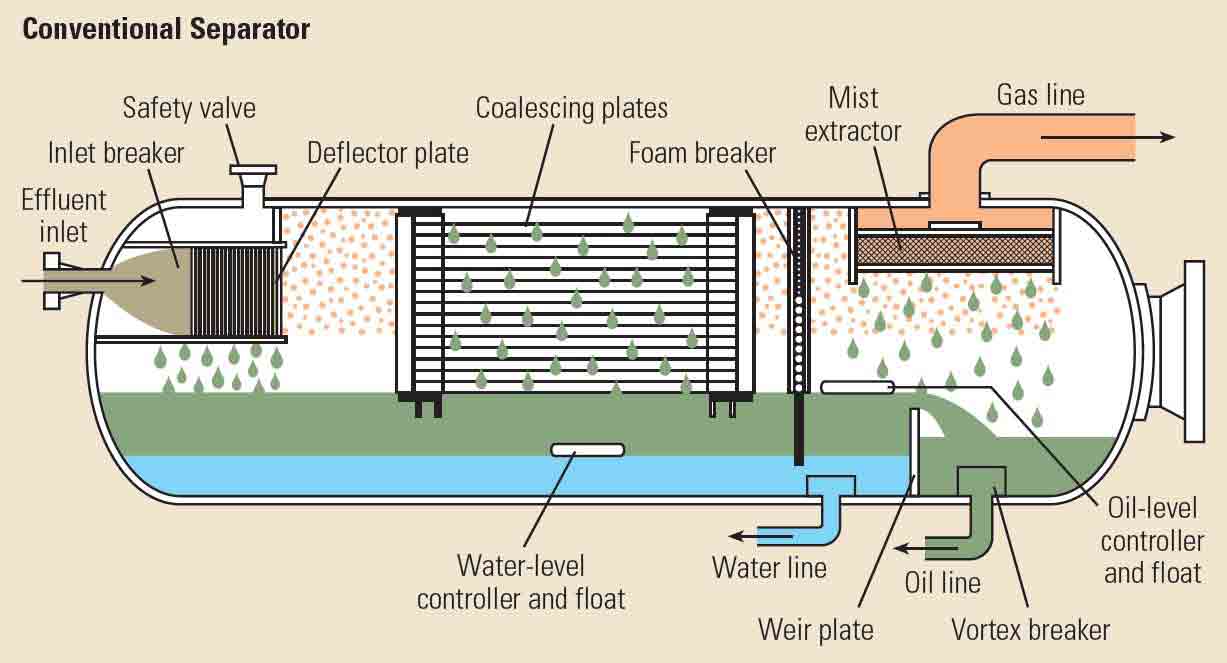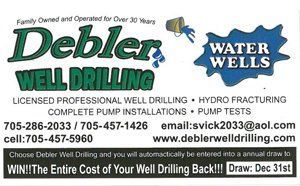Wells & Water

What is a Well System?
When a house is equipped by well water, it implies that they get their drinking, washing, and cleaning water from the private well on their property. Wells are built by drilling into the ground and getting to an underground aquifers. That water is then pumped into the house.
How Do Well Systems Work?
Well water is untreated groundwater stored in aquifers (underground layers of permeable stone). Wells get drilled as far down as 1,000 feet into the rock to get to the water. Pipe casing gets installed into the opening, and a cement or mud sealant encompasses it to secure against pollutants. Water goes through this casing by means via a well pump. The well system gets covered off over the ground. The water then, at that point, enters your home from a line associated between the casing and a pressure tank (for the most part situated in your home's basement). From that point, it gets distributed to faucets all through your home.
Types of Wells
Drilled wells: Sand points are developed by either cable tool (percussion) or rotational drilling machines. They can be drilled in excess of 1,000 feet down.
Driven wells: Driven wells are built by driving a little distance across pipe into shallow water-bearing sand or rock. Hand-driven wells for the most part are about 30 feet down; machine-driven wells can be 50 feet down or more.
Dug wells: Historically, dug wells were excavated by hand digging tools to underneath the water table until approaching water surpassed the digger's bailing rate. The well was fixed with stones, blocks, tile, or other material to prevent breakdown, and was covered with a cap of wood, stone, or concrete tile.
How Long Do Well Systems Last?
Depending on the equipment type and model, well pumps typically last anywhere from 8 to 15 years.

How Much Does A Well System Cost To Install and Replace?
A normal well pump costs $200 to $800 without installation relying upon the type and horsepower. Submersible well pump cost somewhere in the range of $165 and $1,000, deep or shallow-well jet pumps run $95 to $800, hand pumps are $50 to $600, and solar-powered fueled well pumps cost $1,400 to $2,600.
The 7 Warning Signs Associated with Water Well Problems
1. The well is pumping air, and well yield is reduced
2. The well is pumping sand or large amounts of sediment
3. Water pressure is low (pressure tank symptoms)
4. The power bill has skyrocketed
5. Water quality has changed
6. Dissolved gasses or bubbles and air in well water
7. The pressure switch and pump continuously cycles on and off
Well Testing
A WQI (Water Quality Indicators) test is a test that actions the presence and measure of specific microbes in water. Here are a few instances of WQI's:
- Total Coliforms
Coliform bacteria are microorganisms found in the digestive systems of warm-blooded creatures, in soil, on plants, and in surface water. These microorganisms regularly don't make you sick; however, in light of the fact that organisms that do cause sickness are difficult to test for in the water, "total coliforms" are tested instead.
- Fecal Coliforms / Escherichia coli (E. coli)
Fecal coliform microorganisms are a particular sort of total coliform. The excrement (or stool) and digestive systems of people and warm-blooded animals contain a huge number of waste coliforms. E. coli is part of the fecal coliform group and might be tested by itself. Fecal coliforms and E. coli are generally harmless. However, a positive test might imply that excrement and unsafe microorganisms have tracked down their direction into your water system.
- pH
The pH level lets you know how acidic or basic your water is. The pH level of the water can change how your water looks and tastes. Assuming the pH of your water is excessively low or excessively high, it could harm your lines, cause heavy metals like lead to spill out of the lines into the water, and ultimately make you sick.

How Can You Tell When You Should Get Your Well Tested?
- There are known problems with well water in your area
- You have experienced problems near your well (i.e., flooding, land disturbances, and nearby waste disposal sites)
- You replace or repair any part of your well system
- You notice a change in water quality (i.e., taste, color, odor)
How To Maintain Your Well System
- Always use licensed or certified water well drillers and pump installers
- An annual well maintenance check
- Keep hazardous chemicals, such as paint, fertilizer, pesticides and motor oil away from your well.
- Periodically check the well cover or well cap on top of the casing (well) to ensure it is in good repair.
- Always maintain proper separation between your well and buildings, waste systems, or chemical
storage facilities. - Don’t allow back-siphonage. When mixing pesticides, fertilizers or other chemicals, don’t put the hose
inside the tank or container. - When landscaping, keep the top of your well at least one foot above ground. Slope the ground away
from your well for proper drainage. - Take care in working or mowing around your well.
- Keep your well records in a safe place.
- Be aware of changes in your well, the area around your well, or the water it provides.
- When your well has come to the end of its serviceable life (usually more than 20 years), have your qualified water well contractor properly seal your well after constructing your new system.
Find Local Contractors That Specialize In Well Systems!

Haliburton Artesian Well Drillers
Haliburton, ON K0M 1S0
(705) 457-2686

Debler Well Drilling
2369 Gelert Rd, Minden, ON K0M 2K0
(705) 457-1426

The Pump Shop
5161 Haliburton County Rd 21, Haliburton, ON K0M 1S0
(705) 457-2638

